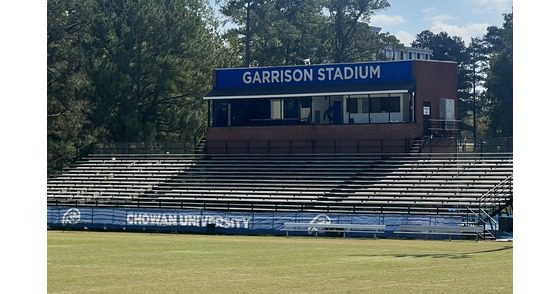100.1 FM ~ 1450 AM ~ WIZS, Your Community Voice ~ Click to LISTEN LOCAL
-Press Release, Office of District Attorney Michael D. Waters
Investigative Summary and Concluding Memorandum in Use of Deadly Force Against David Brooks, Jr.
On the morning of July 24, 2020, Roxboro Police Chief David Hess notified the District Attorney‘s Office an officer with the Roxboro Police Department had discharged his weapon after answering a call for service. David Brooks, Jr., 45 years of age, was killed as the result of a single gunshot wound.
Roxboro Police Chief David Hess asked me to join him in requesting the North Carolina State Bureau of Investigation (SBI) to conduct an independent investigation of the incident. The investigation conducted by the SBI, and the subsequent review by the District Attorney‘s office, was limited to whether the State of North Carolina should bring criminal charges against the officer. The investigation did not concern the separate internal investigation of whether any officers involved followed the correct procedures of the Roxboro Police Department.
After a review of the SBI‘s independent investigation, I determined no charges will be filed against the law enforcement officer for discharging his firearm that resulted in the death of David Brooks, Jr. Before making this decision, my office reviewed all the evidence available to us from the SBI, and carefully examined the relevant law.
911 Call and Communications
On July 24, 2020, Person County Emergency Communications received a 911 call for suspicious activity. Roxboro Police Department dispatched patrol units to the area to investigate. Four officers were on shift. All officers checked en route and were advised the caller stated that there was a black male along the roadway on Old Durham Road near Oxford Road carrying what appeared to be a shotgun or a rifle. The first officer on the scene observed the same and notified other officers en route that he had located the subject of the call, had verified the individual had a weapon and was going to initiate a stop.
Dash Cam and Body Cam Video Recordings
As seen and heard from the in–car video at a timestamp of 1:07.5, the officer pulls onto the northbound shoulder of old Durham Road facing David Brooks, Jr., and can be heard placing the police cruiser in park. At 1:11.4 the officer exits the vehicle and yells “Hey Bro.” At 1:12.5 the officer yells “drop the gun.” At 1:13 the officer chambers a round into his shotgun. At 1:13.3 Mr. Brooks begins raising his gun towards the officer. At 1:15 the officer yells “drop the gun” again. At 1:16 the officer yells “drop the gun” again and fires a single shot.
A video, enhanced by the North Carolina State Crime Lab, shows these events more clearly, including that Mr. Brooks raised his gun, and pointed it at the officer in the seconds before the officer fired the single, fatal shot. The entire encounter, from the time the officer stepped out of the car, to the time the fatal shot was fired, was approximately five seconds. The fatal encounter occurred approximately one minute and ten seconds into the nearly two-hour-long video footage.
Bodycam footage collected from the Person County Sheriff‘s Office from moments after the shooting showed officers and deputies rendering aid to Mr. Brooks, and placing markers and tape to secure the scene for the arrival of the SBI.
Crime Scene and Collected Evidence
Immediately after the shooting, other officers with the Roxboro Police Department and Deputies with the Person County Sheriff‘s Office arrived on scene. While some began rendering medical aid to Mr. Brooks, others redirected traffic and began setting up a secure perimeter. The officer who discharged his weapon returned to his car and placed his shotgun in his patrol car and locked the same. When Chief David Hess arrived, the officer handed his keys to Chief Hess and was transported away. The scene integrity was maintained by the Roxboro Police Department until the SBI arrived and began processing the scene later in the afternoon.
A loaded, .410–gauge, double-barrel shotgun with a fashioned sling was removed from Mr. Brooks prior to first aid being rendered. It was recovered and unloaded by a Roxboro Police Officer and then photographed and turned over to the SBI when agents arrived. The shotgun and two shotshells were submitted to the NC State Crime Lab for analysis. The State Crime Lab concluded that the shotgun stock and barrels had been altered from the original length. The barrel was shortened to 14.72 inches and the overall length was shortened to 24.47 inches overall. The shotgun was operational, and the shotshells were unfired.
Officer and Witness Interviews
SBI agents interviewed all persons known to them with possible knowledge of this incident. Among the persons interviewed was the 911 caller that stated he first encountered an individual in front of the cemetery and asked if he was okay and that the individual responded by shaking his head up and down and tapping his finger on the trigger of what the 911 caller believed to be a sawed-off shotgun. The individual was approximately ten feet away and never pointed the shotgun at the caller.
The first officer on scene was interviewed before the dashcam footage was released or made available to him. He stated he checked en route and answered the call because he was closest to the location. He stated that he turned right off Weeks Drive south onto Old Durham Road, and saw a person fitting the description of the caller walking down the right of way.
The officer stated that as he passed the individual, the dual attempted to “blade himself,” and reduce his profile in what the officer believed to be an attempt to conceal a long gun. The officer further stated he relayed this information to other officers and executed a U–turn at the intersection of Oxford Road and pulled in front of the individual. The officer further stated that he activated his blue lights and placed his car in park before stepping out. The officer reached for his shotgun because the individual was carrying what the officer believed to be a shotgun or rifle, and that as he stepped out of the car, he yelled to drop the gun. The officer placed a shell in the chamber of the shotgun and yelled to drop the gun again.
The officer stated he could see the individual’s left hand on the foregrip of the gun, and his hand was at the pistol grip section of the stock as he began to raise the gun. The officer believed the individual was going to fire and so he fired a single shot. The officer stated he ran to the individual to secure the weapon. At that time, he recognized the individual as David Brooks, Jr.
The officer stated that he had two previous professional encounters with David Brooks, Jr. The first, several years ago, when Mr. Brooks was arrested on a misdemeanor traffic violation. He stated that Mr. Brooks was polite, and the encounter uneventful. Most recently the officer encountered Mr. Brooks at his home while investigating an assault by pointing a gun call at a nearby apartment complex. The officer said that Mr. Brooks appeared to be having a mental health crisis and that the weapon was secured and placed into evidence, and Mr. Brooks was transported to the hospital for treatment. Mr. Brooks was not charged.
Autopsy
An autopsy of the body of David Brooks, Jr. was completed on July 25, 2020. An agent with the SBI attended the autopsy and interviewed the pathologist at the conclusion. The pathologist concluded the deceased had seven shotgun pellets enter the left side of his chest and one on the right side of his chest near his shoulder. The pathologist indicated the pellets that entered his chest were consistent with one shot, traveling front to back, left to right and slightly downward. Mr. Brooks did not have any other injuries besides this single gunshot wound to his chest.
Applicable Law and Analysis
Officers are routinely instructed to only use deadly force as a measure of last resort. The law authorizes an officer to take pre–emptive action and use deadly force to prevent death or serious injury to himself or others. The same legal standards apply to officers as to ordinary citizens. Officers do not lose their right to self–defense by becoming officers. In fact, they are more likely to be placed in situations where they would confront potentially dangerous people in dangerous situations. However, the use of deadly force must be reasonable.
North Carolina General Statute 15A–401 provides that an officer may use deadly force to defend himself from what he reasonably believes to be the imminent use of deadly physical force. As the North Carolina Supreme Court has observed, the calculus of reasonableness must allow for the fact that police officers are often forced to make split–second judgments in circumstances that are tense, uncertain, and rapidly evolving.
Likewise, Federal Court decisions have established that the use of deadly force is reasonable where there is an imminent threat of serious injury or death. In determining whether the officer faced an imminent threat, the United States Supreme Court has stated that reasonableness should be gauged from the perspective of an officer on the scene and should not use the 20/20 vision of hindsight. Graham v. Connor, 490 U.S. 386, 396 (1989).
Furthermore, the Court explained that “[t]he calculus of reasonableness must embody allowance for the fact that police officers are often forced to make split–second judgments – in circumstances that are tense, uncertain, and rapidly evolving – about the amount of force that is necessary in a particular situation.” Id. At 396–97.
Based on the facts and applying applicable law, it is the conclusion of the District Attorney that the officer reasonably believed that his life was endangered when he shot David Brooks, Jr., and therefore the use of deadly force was lawful.
















